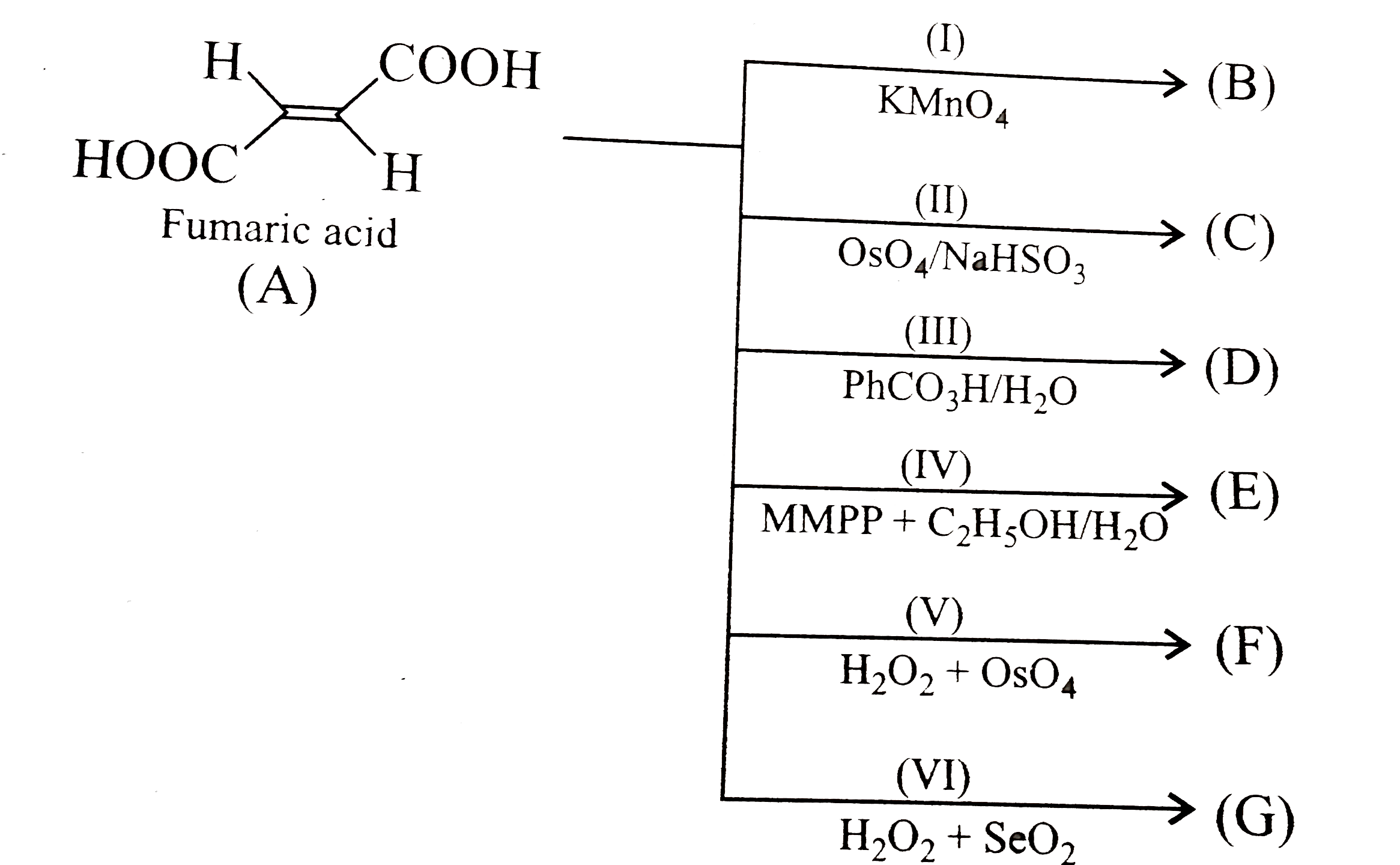How many forms to tartaric acid exist in neture?
A
Three
B
Two
C
Only one
D
Four
Video Solution
Text Solution
The correct Answer is:D
Tartaric acid, HO2CCH(OH)CH(OH)CO2H, contains two structually identical carbon atoms and can therefore exist in the four forms: (+)−,(−)−,(±)− and maso from. All of these are known. (+)− Tartaric acid occurs in the free state as potassium hydrogen tartrate in the juice of grapes.During the fermenation of grapes, the acid potassium salt separates as a reddish-brown crystalline mass which is known as argol. When recrystallized, argol is converted into the purer substance (white), which is knownas cream of tarter, from which (+)− tartaric acid is obtained.
Sodium potassium (+)− tartrate, NaKC4H4O6.4H2O, is known as Rochellc salt and is used in the perparation of Fehling's solution, which is an alkaline solution of cupric ions complexed with two tartrate ions. Tartar emetic is potassium antimony1D(+)− tartrate.
D(+)−Tartaric acid is used in the perparation of effevescent drinks. The acid and tartar emetic are both used as mordants in the deyeing and printing. When heated with sodium hydroxide solution (or even with water), D−(+)− tartaric acid is converted into DL− tartaric acid (29−30%) and meso-tartaric acis (13−17%).L(−)− tartaric acid does not occur naturally but may be obtained from DL−tartaric acid by resolution. Maso-compounds cannot be separated into enantiomeric forms.
|
Topper's Solved these Questions
- STEREOCHEMISTRYBOOK - R SHARMACHAPTER - STEREOCHEMISTRYEXERCISE - Follow-up Test 2
1 Videos
- STEREOCHEMISTRYBOOK - R SHARMACHAPTER - STEREOCHEMISTRYEXERCISE - Follow-up Test 3
1 Videos
- STEREOCHEMISTRYBOOK - R SHARMACHAPTER - STEREOCHEMISTRYEXERCISE - Follow-up Test 1
1 Videos
- SOLUTIONSBOOK - R SHARMACHAPTER - SOLUTIONSEXERCISE - ARCHIVES
42 Videos
- SURFACE CHEMISTRYBOOK - R SHARMACHAPTER - SURFACE CHEMISTRYEXERCISE - Archives
18 Videos
Similar Questions
Knowledge Check
 Meso Tartaric acid ARiboseBArabinoseCMannoseDTalose
Meso Tartaric acid ARiboseBArabinoseCMannoseDTaloseMeso form of tartaric acid is –
ADextorotatoryBLaevorotatoryCNeither Laevo nor dextro rotatory due to internal compensationDA mixture of equal quantities of dextro and leavo rotatory formsTartaric acid is present in
ALemonBTamarindCMaizeDAll of the above

